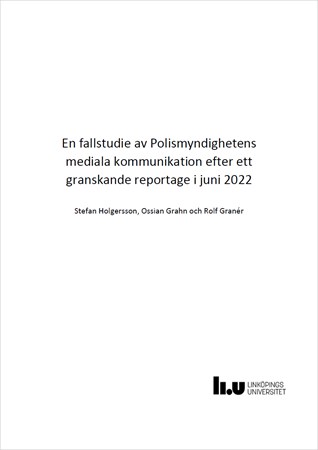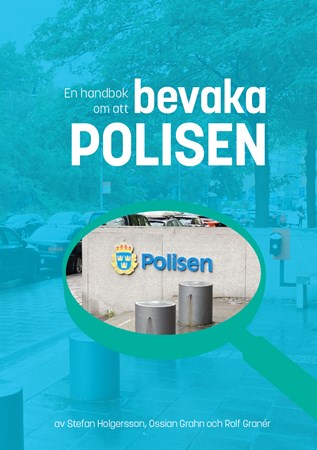In the report “A case study of the Swedish Police Authority’s communication in the media after a critical report in June 2022”, from Linköping University (LiU), the police’s actions following media scrutiny were analysed.
“The police make themselves inaccessible and don’t want to give out information. And when they do, they give misleading information. This can damage trust in the police”, says one of the authors on the report, Stefan Holgersson, docent in information systems at LiU and professor of police studies in Oslo.
Case study
He has spent 25 years researching the activity of the Swedish Police Authority, and has written several reports containing suggestions as to how policing can be developed. The latest report is a case study of how the Authority communicated in the media debate following the extensive criticism that they received after scrutiny in Svenska Dagbladet. The report contains media statements by police employees and other professionals that work with the police. The report also shows that the number of employees at the Authority has risen in recent years, and that the Authority’s budget has grown by 40 percent since 2014.“But, despite this, efficiency has fallen, which is a consequence of the structural problems within the Authority”, says Stefan Holgersson.
Handbook for journalists
With the publication of the report, Stefan Holgersson is also publishing the handbook A Handbook for Monitoring the Police. Both publications are part of the three year-long research project “What the Swedish Police Authority wants to hide”, which is now in its final phase.“I get loads of questions from journalists, such as how they can request information from the police. The police have an important role in society, so it is important that they are transparent and open to scrutiny.”
The handbook contains advice about how and where information can be requested based on the Swedish principle of public access to official records. The report also contains a section which is intended to provide support when doing interviews, and which gives concrete examples of communication strategies that the police use.
“The Swedish police authority is not unique in using the communication strategies and methods illustrated in the handbook. The handbook can even be used when scrutinising other public authorities”, says Stefan Holgersson.
Attention in the media
Stefan Holgersson has previously released another report from the same project, a report in which he gives examples of how the Swedish Police Authority hides problems and prevents scrutiny. He has also written other kinds of report which have focussed on areas that he believes should be developed within the police. Stefan Holgersson believes that the subject of his research means that his work is often taken up in the media. When asked whether he might be seen as an opinion maker, he answers:“I identify problems, described them, and make suggestions for solutions that I believe are important in order for Sweden’s police to work well. Because of this, I'm often contacted by the media. But I would also like to help internally, within the police.”
The goal of the project
Stefan Holgersson has written this latest report and handbook together with Ossian Grahn, a journalist who, among other things, has worked at the Swedish police newspaper, and Rolf Granér, who is responsible for research[BD1] at the police training programme in Växjö.“The goal of the project is to show and highlight that the Swedish Police Authority’s behaviour risks undermining trust in the long run – not just in the police, but also in other public authorities. In order to avoid this, public authorities must change how they work and how they handle criticism.”
Both the handbook and the report will, as with the other reports, be available in “Diva”, the open research portal where the public can access research publications and student essays produced at some 50 higher education and research institutions.

